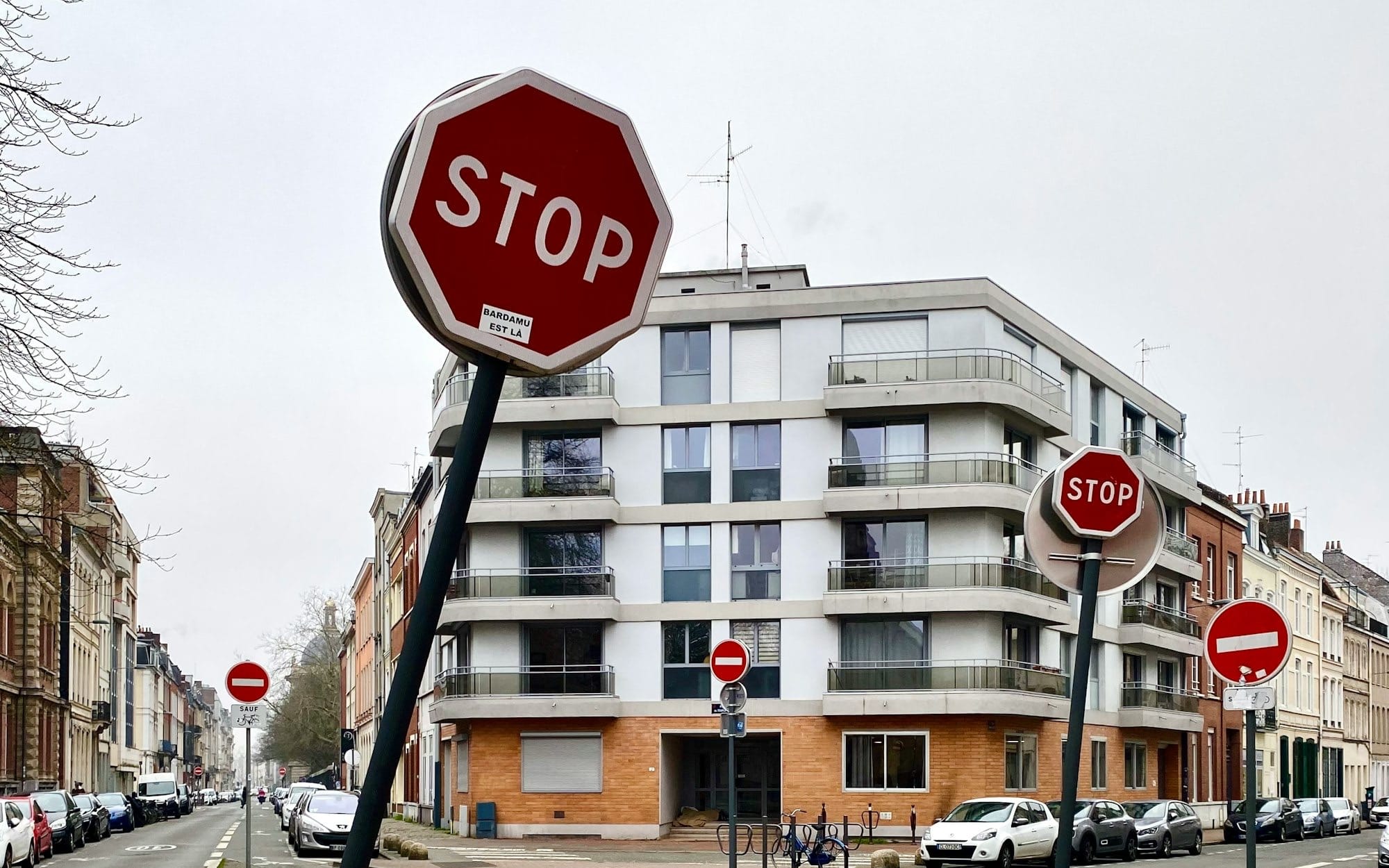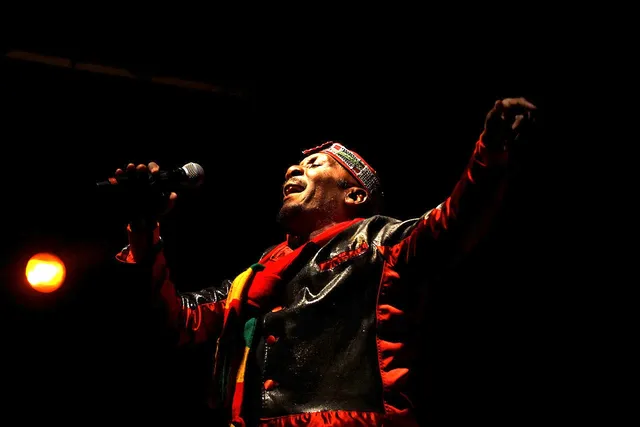A Slow Reckoning Strikes Back
After two decades of relentless acceleration, a cultural shift is occurring. The relentless pursuit of speed and innovation is giving way to a focus on stillness, patience, and accountability.

The Machine Exhales
Quick Note: This article plays better with the volume on. Here's the soundtrack while you read.
After twenty years of acceleration, the air feels different.
The machine that once demanded constant motion, constant output, constant optimization, has started to breathe out. The speed that once felt like progress now feels like noise. What was once called innovation now reads as exhaustion wearing the mask of ambition.
Every system that ran on momentum is beginning to stall on purpose. Advertising is rediscovering empathy. Fashion is trading hype for longevity. Technology is pausing long enough to ask what it has actually built. Even the platforms that taught us to swipe before thinking are now asking us to sit still.
Acceleration once defined success. Move fast, break things, pivot, scale. That was the mantra of a generation raised on startup scripture. But every mantra ages. Every mechanism overheats. The cultural engine has burned through its fuel. And in the sudden quiet that follows, something unfamiliar is returning to the room: attention.
We are entering a phase where stillness itself has become a form of rebellion. Where patience signals confidence. Where the bravest act in a culture addicted to motion is to hold a moment without refreshing it.
The machine has not stopped. It has simply exhaled.
Cracks Appear in the Acceleration

The culture of speed was supposed to make us limitless. Faster connections, shorter cycles, instant access to everything. But the promise of acceleration turned out to be a trap disguised as progress. What began as efficiency became anxiety. What began as connection became performance.
You can feel the fatigue in every sector. The ad industry is tired of pretending to be machines. Agencies are selling humanity again, positioning emotion and empathy as the next great differentiator. Fashion is tired of the hype cycle, pulling back toward durability and craft. Even creators, the engine of the digital economy, are realizing that constant posting is not presence. They are pacing themselves, building smaller studios, and reclaiming control over their tempo.
The culture that once worshiped “fast” is starting to remember what “lasting” feels like. The slowdown is not a failure of innovation but a correction of value. A reminder that meaning compounds only with time.
We are entering what might be called the Slow Burn Era. It is not nostalgic or anti-tech. It is simply the point in every system’s life cycle when endurance overtakes excitement. The moment when speed stops being a competitive advantage and starts being a liability.
Acceleration had its run. It taught us scale, reach, and automation. Now the frontier belongs to those who can focus. The ones who can hold a thought without outsourcing it, build a brand without burning it out, and design systems that move at the speed of understanding.
The Shift Towards Accountability

Every cycle of excess eventually corrects itself. After years of brands shouting louder and designers chasing clever for its own sake, something quieter is taking hold. The power move now isn’t polish. It’s honesty.
Across industries, the gloss is coming off. Companies are tidying their names, cleaning their interfaces, and showing the labor behind their tools. Apple quietly dropped a symbol. Logitech designed for tactility instead of fantasy. Regulators are stepping in to legislate design itself, treating interface patterns as policy language. Even the “anti-brand” aesthetic—lowercase, ironic, self-aware—has been exposed as another form of care, just disguised as cynicism.
This is what maturity looks like in the attention economy. A movement from performance toward accountability. From surfaces that seduce to systems that explain themselves. From the myth of effortless design to the visible seams of human work.
Brands are realizing that confidence is communicated through clarity, not noise. The companies that once won by creating illusion are now rewarded for pulling back the curtain. The audience has changed. The trust gap has widened. The only way through it is to be legible.
The Age of Accountability is not about apology. It is about literacy. It asks every designer, marketer, and technologist to make their intent readable again. To build things that tell the truth about how they work, who they serve, and what they cost.
When Industries Share the Same Script

Every industry is starting to look the same. Studios act like platforms. Platforms act like studios. The algorithm is the new showrunner, deciding what gets made, clipped, looped, and sold.
What once looked like separate worlds (film, social, streaming, advertising) now runs on the same logic of engagement. The content shifts, but the math stays the same. Familiarity wins. Novelty is rationed. The hit is no longer the story itself but how quickly it can be turned into something to sell.
Television never died. It just changed form. The feed became the channel. The scroll became the remote. Every platform wants to be your living room, even if it lives in your hand. Audiences, worn down by endless discovery, are drifting back toward comfort. They want stories that feel safe to revisit, characters who stay put, worlds that offer a little order.
This is the quiet truth behind what people still call innovation. The faster the system scales, the less it risks. Culture is not being created at speed anymore. It is being recycled at scale. The machine has learned to syndicate emotion the same way it syndicates content.
The Great Convergence is not imitation. It is control. Whoever owns distribution owns the data. Whoever owns the data decides what gets made next. Creativity still happens, but inside the margins allowed by the model. The line between creation, curation, and commerce has dissolved into one continuous loop. The feed keeps spinning.
The Emergence of Mirror Reflection AI Machines

We built technology to extend our reach, not realizing it would also extend our reflection. The more capable our systems become, the more they start to resemble the logic, bias, and chaos of the people who made them. What began as automation now feels like imitation. The tools have learned our tone, our tempo, and our shortcuts.
Algorithms are not conscious, but they are observant. They learn what we reward, what we ignore, and what we hide. In doing so, they expose how much of our own intelligence is pattern, habit, and impulse. When a machine learns to price-fix without collusion or optimize for attention without empathy. This isn’t rebelling. It is reporting.
Quantum chips are now modeling uncertainty itself. Clouds fail and remind us that our infrastructure is still physical. The dream of a frictionless digital world keeps crashing into its own weight. Even the illusion of infinite choice has started to feel like a tax on attention.
AI has become less a single breakthrough and more an ecosystem of reflections. Each model captures a fragment of us—our efficiency, our vanity, our speed. None of them are self-aware, yet together they show us something intimate: the architecture of our own limits.
The mirror has always been a human invention. We just didn’t expect it to talk back.
Final Prediction
The age of acceleration taught us how to move. The age that follows will teach us how to stop. Every loop, feed, and framework is being rewritten around the same question: what is worth the energy to sustain? That is the real frontier now, deciding what deserves to keep running.
The advantage ahead is comprehension. Technology can process, but it cannot interpret. Brands, creators, and systems that learn how to translate noise into meaning will shape what comes next. The future is not faster, it is clearer.
Every system is learning to slow down. The metrics of success are shifting from reach to resonance, from visibility to value. What matters now is not how fast something spreads, but whether it stays in the mind after it lands. The next wave of culture will belong to those who can create things that move slower, last longer, and mean more.
🔮 Trend-004 | Reflection Loops
Friction: Speed, automation, and abundance have outpaced comprehension. Culture, design, and technology are collapsing under the weight of their own momentum.
Reframe: Stillness becomes strategy. The new competitive edge is understanding in place of acceleration. Systems that move at the speed of meaning win trust, clarity, and endurance.
Launch Path: Build for interpretation, not just interaction. Prioritize design literacy, cultural focus, and technological reflection. When the world stops to think, be the brand that already learned how.


